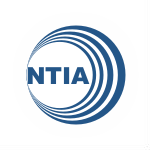 The National Telecommunications and Information Administration has done a highly detailed analysis of broadband deployment in the U.S. -– looking at broadband availability by speed, by technology, by state, by county, and by various combinations of these factors. The upshot, the NTIA said, is that although the U.S. continues to make progress on broadband deployment and speeds, gaps between rural and metro areas persist.
The National Telecommunications and Information Administration has done a highly detailed analysis of broadband deployment in the U.S. -– looking at broadband availability by speed, by technology, by state, by county, and by various combinations of these factors. The upshot, the NTIA said, is that although the U.S. continues to make progress on broadband deployment and speeds, gaps between rural and metro areas persist.
The report notes, for example, that almost 100% of urban residents have access to download speeds of at least 6 Mbps but only 82% of rural communities can access these speeds. And while almost 88% of urban residents have access to speeds of 25 Mbps, only 41% of rural residents have the same access.
One of the most interesting charts in the report was one showing the percentage of counties where people can get broadband at various speeds ranging from basic 3 Mbps downstream service to high-speed 100 Mbps downstream service. In the chart, reproduced here, each speed level has a low and a high mark. The high mark shows the percentage of counties where 25% of the population can get broadband at a certain speed, while the low mark shows the percentage of counties where 95% of the population can get service at that speed.
The chart shows, for example, that 5% of the people in 41% of U.S. counties lack even basic 3 Mbps broadband. And 75% of the people in just under 2% of U.S. counties lack broadband at that speed.
At the 6 Mbps level, 5% of the people in 62% of U.S. counties cannot get service. And 75% of the people in 4.5% of U.S. counties can’t get 6 Mbps broadband.
Other interesting report findings:
- The states that have the highest percentage of people who can get broadband at download speeds of 10 Mbps or greater are either more densely populated than the nationwide average or are more urbanized. Utah, for example, is more sparsely populated than average but a large percentage of its total population lives in urban areas.
- States with the lowest availability of higher-speed broadband (10 Mbps downstream or greater) all fall below the nationwide average on population density. In addition, all but one fall into the bottom half on urbanization.
- Approximately 81% of Americans can access mobile wireless download speeds of 6 Mbps or greater.
“Although the data show that industry has made significant progress in expanding broadband availability over the past two years, it is important to note the inconsistency of availability across the country,” the NTIA writes in the conclusion to the report. “Even for basic speeds, gaps still persist between rural and urban communities. These gaps between rural and urban broadband availability become larger as speeds increase.”
The NTIA report does not offer recommendations about how to address the rural-urban broadband gap.

